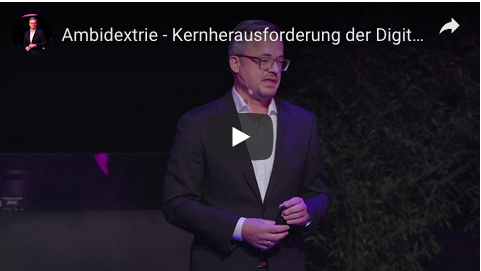Digitalisation is triggering radical change, which companies can see not only as a threat but also as an opportunity. To do this, however, companies must build the dynamic ability to simultaneously optimize what already exists and build something new. Dealing with this ambidexterity is the real challenge of digital transformation. Embedded entrepreneurial teams as small, agile units are one way to support successful implementation. To achieve this, however, management must cope with a higher degree of complexity. The lecture will present challenges, suitable methods and successful practical experience on the basis of numerous company cases.
Added Value for the Participants
- Understand how digital transformation increases dynamics and volatility in the business environment
- Learn how these challenges change the leadership context and lead to a paradigm shift in management
- Understand how the complexity challenge can be met through leadership behavior and organizational design
- Getting to know first design hints for ambidextrous leadership and organizational design (ambidextrie) based on concrete examples from practice
- Addressing concrete guidelines for their own leadership contexts to promote agility in everyday working life

